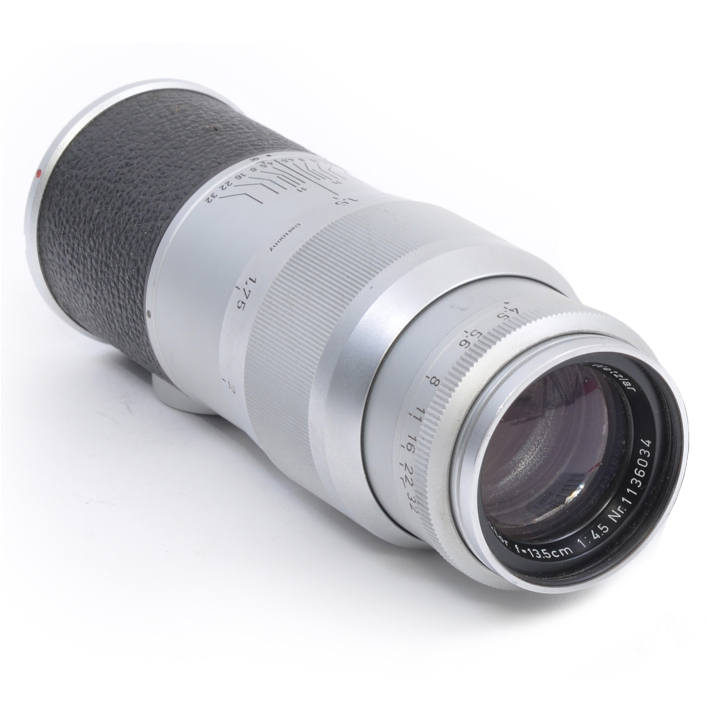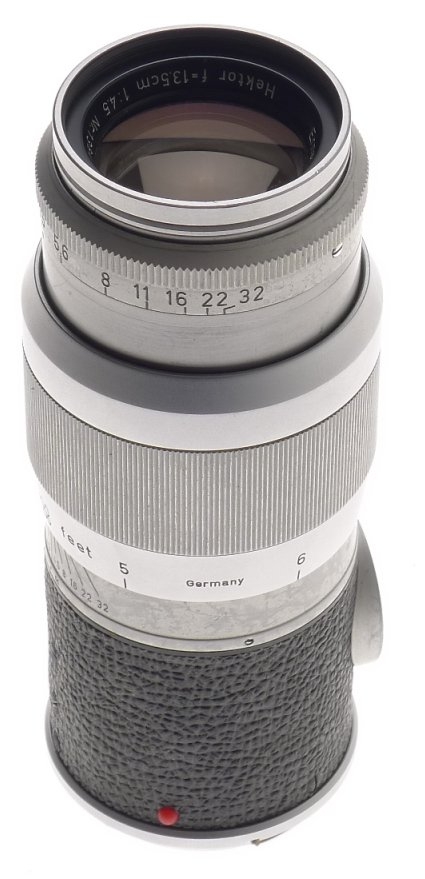Obiettivi Leica

(Immagine proprietà Leica)
- ITA -
Obiettivo datato 1956, questo Hektor 135 mm f/4.5 a baionetta, sa dare ancora forti emozioni con scatti non adatti a tutto, come vedremo, ma di grande impatto.
L'otttica è composta da 4 elementi in 3 gruppi, la prima fu realizzata nel 1933 e portata avanti fino al 1960.
Il diaframma è formato da 15 lamelle con apertura massima ad f / 4.5 ed apertura minima ad f / 32.
Questo obiettivo non è particolarmente adatto a fotografia naturalistica o paesaggistica in quanto non restituisce una nitidezza particolare. Al contrario le foto risulteranno alquanto patinate e soft sopratutto a massima apertura e man mano che si andrà a chiudere il diaframma i lineamenti saranno sempre più evidenti e chiari.
E' evidente che quest'ottica è particolarmente adatta a ritratti. Essa restituisce, grazie alle caratteristiche evidenziate, un'ottimo effetto sui volti e sulla pelle delle persone donando uno scatto certamente diverso da qualsiasi altro obiettivo di questo genere.
Le sue dimensioni sono ridotte, rispetto ai suoi concorrenti, e cioè 127,48 x 50,96mm con una lunghezza complessiva di 645 mm circa.
Questo modello è caratterizato da un attacco a baionetta per fotocamere di tipo Leica M e pesa oltre i 400gr.
Il bokeh, come già spiegato, è notevole e molto piacevole e le immagini non presentano alcuna distorsione causata dalla deformazione del barilotto o da altre fonti.
L'intero corpo è in metallo cromato argento ed i filtri sono di larghezza 39mm.
Parte del corpo è smontabile, in particolar modo dove risiedono le ottiche in alto. Questo permette una più facile manutenzione e pulizia.
Infine ricordiamo, come in gran parte delle ottiche Leica, la possibilità di calcolare la profondità di campo in base alla distanza dell'oggetto, guardando le indicazioni poste proprio al di sotto dell'anello di messa a fuoco. Ciò è molto utile se si vuole realizzare quale deve essere la distanza a cui dobbiamo stare per mettere a fuoco un soggetto, calcolo facilmente realizzabile tramite la formula
F*(H/h)=D
dove F è la lunghezza focale dell'obiettivo, H è l'altezza del campo inquadrato, h il lato corto del sensore o dell'otturatore a tendina della vostra telemetro analogica e D la distanza tra fotocamera e soggetto.
- ENG -

(Image Leica cameras)
Objective dated 1956 this Hektor 135mm f/4.5 bayonet, still knows how to give strong emotions with shots not suitable for all, as we shall see, but of great impact.
The otttica is composed of 4 elements in 3 groups, the first was made in 1933 and continued until 1960.
The diaphragm consists of 15 blades with maximum aperture at f / 4.5 and minimum aperture to f / 32.
This lens is not particularly suitable for nature photography or landscape because it returns a particular sharpness. On the contrary, your photos will be very glossy and soft especially at maximum aperture and as you will close the iris of the features will become more evident and clear.
It 'obvious that this light is particularly suitable for portraits. It returns, thanks to the highlighted features, a very good effect on the skin and on the faces of people giving a shot certainly unlike any other objective of this kind.
Its dimensions are reduced, compared to its competitors, namely 127.48 x 50.96 mm with a total length of about 645 mm.
This model is caracterise by a bayonet-type cameras for Leica M and weighs more than 400g.
The bokeh, as already explained, is remarkable and very pleasant and the images do not show any distortion caused by the deformation of the barrel or from other sources.
The whole body is in chromed silver and filters are 39mm wide.
Part of the body is removable, particularly where the optical counts upwards. This allows easier maintenance and cleaning.
Finally note, as in most of the optical Leica, the possibility to calculate the depth of field according to the distance of the object, looking at the instructions placed just beneath the ring of focus. This is very useful if you want to accomplish what should be the distance at which we must be to focus on a subject, calculation easy through the formula
F * (H / h) = D
where F is the lens focal length, H is the height of the field of view, h the short side of the sensor or shutter-down of your rangefinder analog and D the distance between the camera and subject.
©Copyright by Marco Pollini, all rights reserved 2019










